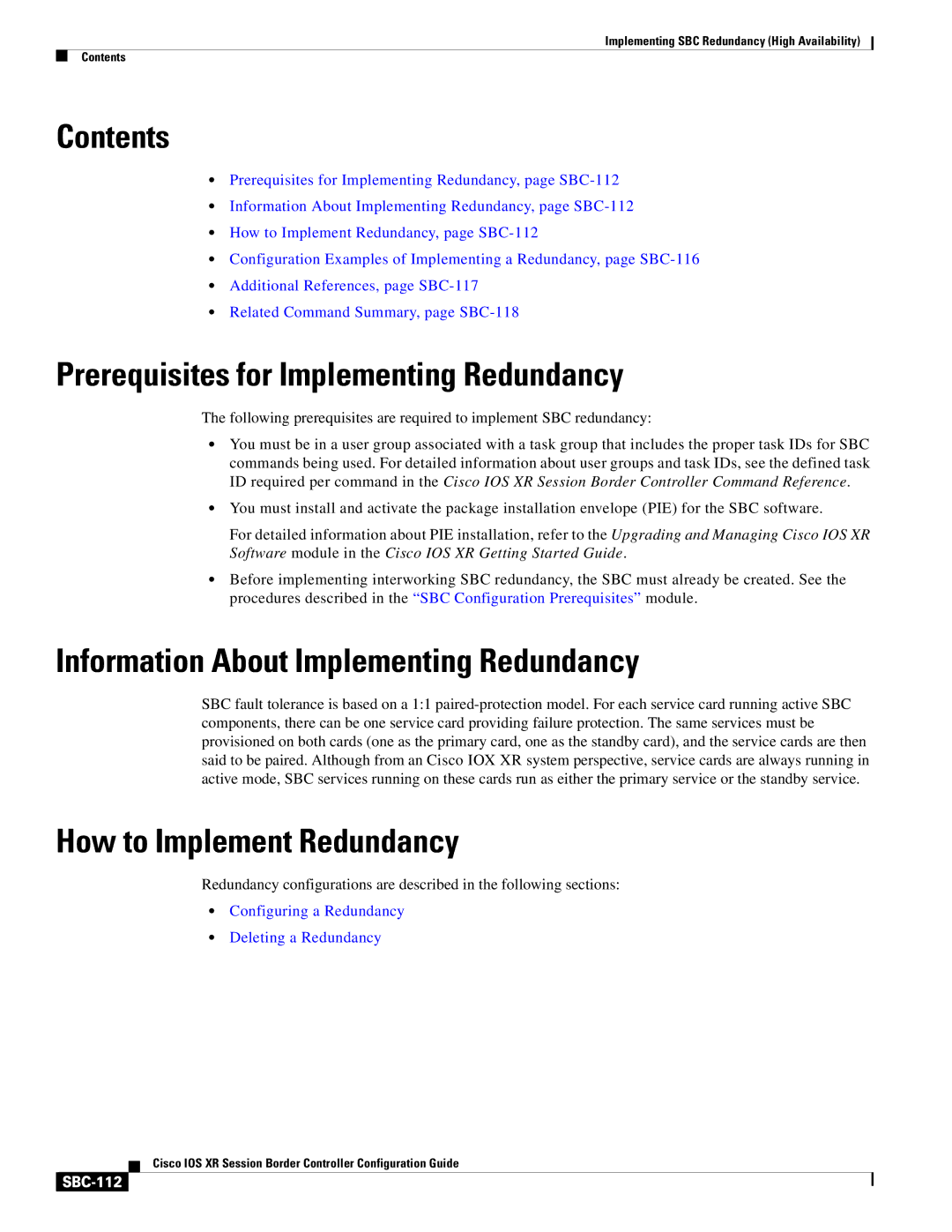
Implementing SBC Redundancy (High Availability)
Contents
Contents
•Prerequisites for Implementing Redundancy, page
•Information About Implementing Redundancy, page
•How to Implement Redundancy, page
•Configuration Examples of Implementing a Redundancy, page
•Additional References, page
•Related Command Summary, page
Prerequisites for Implementing Redundancy
The following prerequisites are required to implement SBC redundancy:
•You must be in a user group associated with a task group that includes the proper task IDs for SBC commands being used. For detailed information about user groups and task IDs, see the defined task ID required per command in the Cisco IOS XR Session Border Controller Command Reference.
•You must install and activate the package installation envelope (PIE) for the SBC software.
For detailed information about PIE installation, refer to the Upgrading and Managing Cisco IOS XR Software module in the Cisco IOS XR Getting Started Guide.
•Before implementing interworking SBC redundancy, the SBC must already be created. See the procedures described in the “SBC Configuration Prerequisites” module.
Information About Implementing Redundancy
SBC fault tolerance is based on a 1:1
How to Implement Redundancy
Redundancy configurations are described in the following sections:
•Configuring a Redundancy
•Deleting a Redundancy
Cisco IOS XR Session Border Controller Configuration Guide
